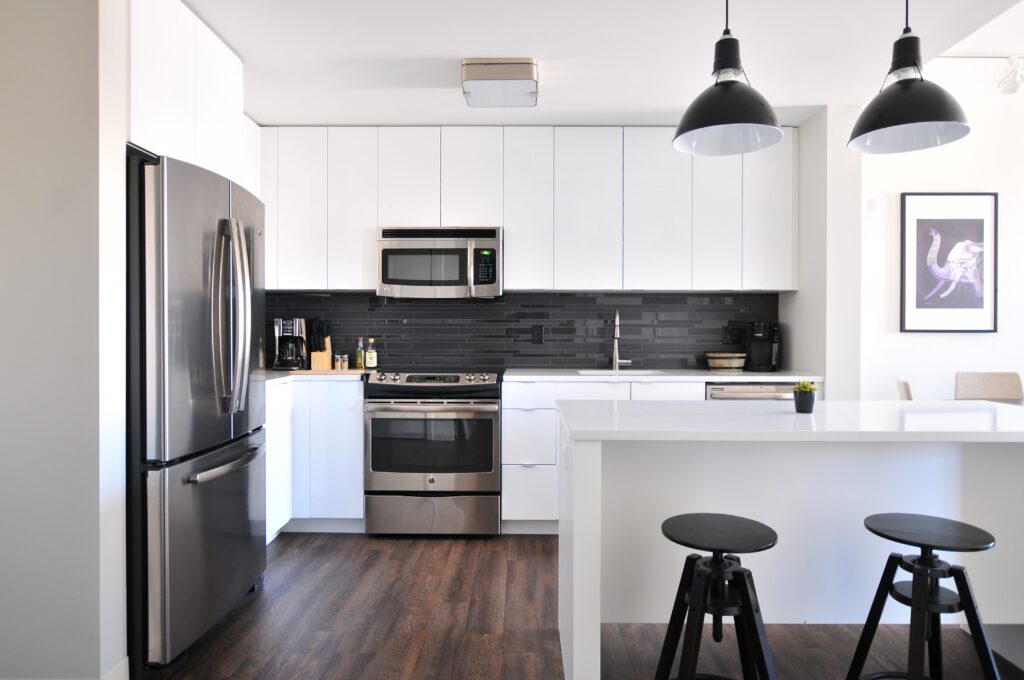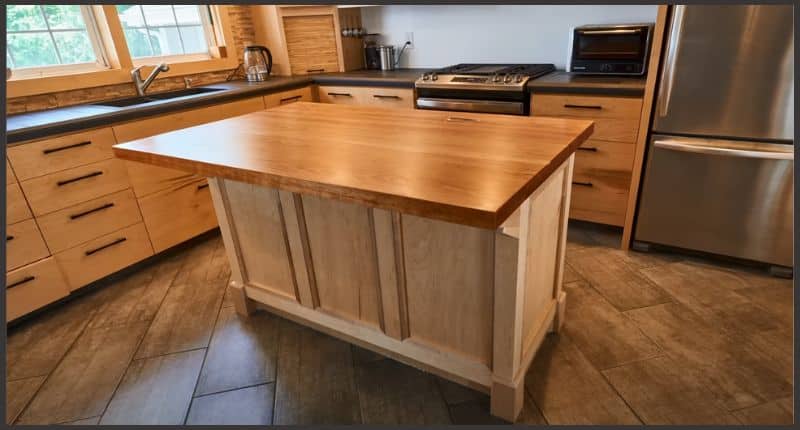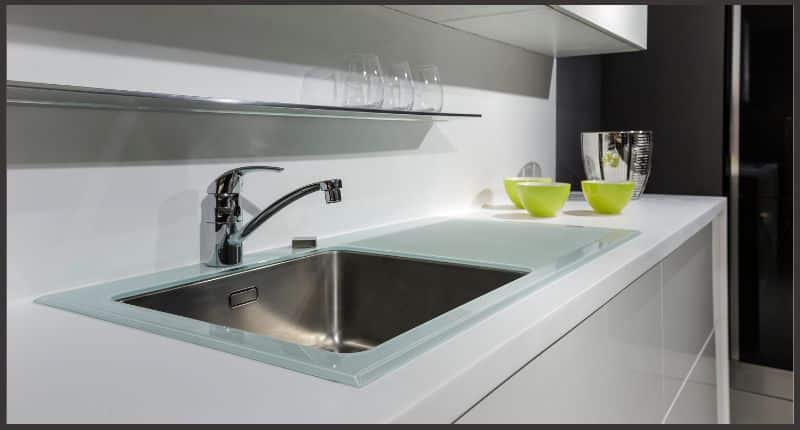Welcome to the world of the kitchen, where delicious meals and culinary creations come to life! However, amidst the sizzle of frying pans and the aroma of spices, it is essential to prioritize safety. The kitchen can be a potentially hazardous place, but with the right knowledge and precautions, accidents can be prevented. In this guide, we will explore various tips and practices that will help you stay safe and sound while cooking up a storm. From handling sharp knives to preventing burns, we will cover it all. So, let’s embark on this journey together and ensure that your time spent in the kitchen is not only enjoyable but safe as well!
Table of Contents
How to Stay Safe in the Kitchen: Expert Tips for a Hazard-Free Cooking Experience
Introduction
The kitchen is often described as the heart of the home, a place where delicious meals are prepared and family memories are made. But amidst the hustle and bustle of slicing, dicing, and frying, it’s easy to overlook the potential hazards that lurk in this culinary haven. From sharp knives to scalding hot stovetops, accidents can happen in the blink of an eye. To ensure that your kitchen is a safe space for both seasoned chefs and novice cooks, we’ve compiled a comprehensive guide filled with expert tips and practical advice. So let’s dive in and discover how to stay safe in the kitchen.
1. Be Aware of Potential Hazards
Before we delve into the specifics of kitchen safety, it’s crucial to understand the potential hazards that exist in this culinary domain. Sharp objects, slippery floors, scalding surfaces, and even rogue electrical appliances are just a few examples of what can turn your cooking venture into a calamity. By being aware of these potential dangers, you’ll be better equipped to prevent accidents before they occur.
2. Create a Clutter-Free Environment
They say a cluttered kitchen is a recipe for disaster, and it couldn’t be truer. Piles of dishes, scattered utensils, and overflowing trash cans not only impede your cooking process but also increase the risk of accidents. Take a few minutes before starting to cook to ensure your workspace is clean, organized, and free from any potential tripping hazards.
3. Mind the Heat: Prevent Burns and Scalds
3.1. Dress Appropriately
When it comes to kitchen safety, clothing choices matter more than you might think. Loose-fitting sleeves, flowing scarves, and dangling accessories have the potential to catch fire or cause accidental spills. Opt for well-fitting, comfortable attire and avoid long, flowing garments that can easily come in contact with heat sources or open flames.
3.2. Handle Hot Surfaces with Care
Whether you’re stirring a sizzling skillet or removing a tray of cookies from the oven, it’s crucial to handle hot surfaces with care. Always use pot holders or oven mitts to protect your hands from burns and use caution when lifting lids or removing items from the stove.
3.3. Beware of Boiling Water
Boiling water may seem harmless, but it can cause severe burns if not handled properly. When working with pots or kettles filled with boiling liquid, ensure that the handles are turned away from the edge of the stovetop to prevent accidental spills. And always keep a safe distance to avoid steam burns.
3.4. Keep Children and Pets Away
Children and pets are naturally curious, and the kitchen can be an enticing place for them. To prevent accidents, establish a clear boundary and ensure that little ones and furry friends are kept at a safe distance from hot surfaces, sharp utensils, and potential hazards like boiling water or hot oil. Additionally, consider using stove knob covers to prevent unintended activations.
4. Knife Safety: Chop with Caution
4.1. Invest in Quality Knives
A dull, poorly constructed knife can be more dangerous than a sharp one. Invest in high-quality knives that hold their edge and are less prone to slipping. Sharp knives require less force to slice through food, reducing the chances of accidental slips that can result in painful injuries.
4.2. Proper Hand Placement
When using a knife, proper hand placement is essential for safety. Ensure a firm grip on the handle with your fingers tucked away and your thumb resting on the side of the blade. This grip offers better control and reduces the risk of your hand slipping onto the blade.
4.3. Pay Attention While Cutting
It’s easy to get lost in thought while chopping vegetables or slicing meat, but staying focused is crucial to preventing injuries. Avoid distractions, such as watching TV or engaging in conversations, while handling sharp objects. Remember, a momentary lapse in attention can lead to a serious accident.
4.4. Store Knives Safely
After you’ve finished using a knife, resist the temptation to leave it lying on the counter. Always store knives in a designated block or sheath to prevent accidental cuts and to keep them out of reach of children.
5. Fire Safety: Be Prepared
5.1. Install Fire Safety Equipment
No one expects a kitchen fire, but being prepared can make a lifesaving difference. Install a fire extinguisher near your cooking area and ensure it is easily accessible. Additionally, consider installing a smoke detector with a built-in alarm near your kitchen to quickly alert you in case of smoke or fire.
5.2. Learn How to Use a Fire Extinguisher
Having a fire extinguisher on hand is useless if you don’t know how to use it. Take the time to familiarize yourself with the proper operation of a fire extinguisher. Remember the acronym PASS: Pull the pin, Aim at the base of the fire, Squeeze the handle, and Sweep from side to side.
5.3. Never Leave Cooking Unattended
The majority of kitchen fires are caused by unattended cooking. Always stay in the kitchen while cooking, especially when using high heat or hot oil. If you need to leave the kitchen for any reason, turn off the stove or oven to eliminate any potential fire hazards.
6. Electrical Safety: Avoid Shocking Surprises
6.1. Keep Appliances Away from Water
Water and electricity are a dangerous combination. Be cautious when using electrical appliances near water sources, such as sinks or wet countertops. Ensure your hands are dry before plugging in or unplugging any device, and never touch electrical outlets or switches with wet hands.
6.2. Check Cords and Outlets
Frayed or damaged cords can pose a significant risk of electrical shock or fire. Regularly inspect the cords of your kitchen appliances for any signs of wear or damage. Additionally, avoid overloading outlets by plugging too many devices into a single socket. Consider using surge protectors to minimize the risk of electrical fires.
6.3. Unplug Appliances When Not in Use
When you’re done using a kitchen appliance, such as a toaster or blender, unplug it from the outlet. This not only saves energy but also eliminates the risk of accidental activations or electrical malfunctions that can lead to fires.
6.4. Use Ground Fault Circuit Interrupters (GFCIs)
GFCIs are designed to protect against electrical shock in areas where water is present, such as kitchens or bathrooms. Ensure that your kitchen outlets are equipped with GFCIs. These devices can sense electrical currents and automatically cut off power if they detect a potential electrical hazard.
7. Chemical Safety: Handle with Care
7.1. Store Chemicals Properly
Many common kitchen products, such as cleaning solutions and dishwashing detergents, contain potentially harmful chemicals. Always store these substances in a locked cabinet or high out of reach of children and pets. Additionally, read product labels carefully and follow the recommended usage instructions.
7.2. Avoid Mixing Chemicals
Mixing different cleaning products or chemicals can lead to dangerous reactions, releasing toxic fumes or causing explosions. Before using any chemicals in your kitchen, ensure that you understand their properties and avoid mixing them under any circumstances.
7.3. Use Ventilation
When using chemical cleaning agents or working with substances that emit strong odors, make sure your kitchen is well-ventilated. Open windows or turn on exhaust fans to prevent harmful fumes from accumulating in the air. Chemical exposure can lead to respiratory problems and other health issues.
Conclusion
Cooking should be a joyous and satisfying experience, but it’s essential to prioritize safety in the kitchen. By being aware of potential hazards, creating a clutter-free environment, and adhering to safety protocols, you can drastically reduce the risk of accidents and injuries. So the next time you step into your kitchen, remember these expert tips and make your culinary adventures filled with delicious meals and peace of mind. Stay safe, and happy cooking!

Photo by Naomi Hébert on Unsplash
Additional Guide
Here are three relevant articles related to “How to Stay Safe in the Kitchen” that can be linked internally:
1. [Kitchen Tips for the Home: Maximize Efficiency and Master Culinary Delights](https://onekitchenreview.com/kitchen-tips-for-the-home-maximize-efficiency-and-master-culinary-delights/)
– Learn useful tips and tricks for creating a safe and efficient kitchen space, ensuring your safety while cooking.
2. [How to Make a Small Kitchen Look Bigger](https://onekitchenreview.com/how-to-make-a-small-kitchen-look-bigger/)
– Discover effective strategies to optimize space and reduce clutter in your kitchen, ultimately promoting safety and functionality.
3. [Things to Consider When Designing a Kitchen](https://onekitchenreview.com/things-to-consider-when-designing-a-kitchen/)
– Find essential factors to take into account when designing or renovating your kitchen, with a focus on safety measures.
Remember to include the appropriate tags to create the internal links in your content.
FAQs: how to stay safe in the kitchen
Q: What are some basic kitchen safety tips?
A: Here are some basic kitchen safety tips:
– Keep your work area clean and uncluttered to minimize accidents.
– Always use oven mitts or potholders when handling hot pans or dishes.
– Use caution when handling knives and other sharp utensils, keeping them away from the edge of countertops.
– Never leave a hot stove or oven unattended and never leave flammable items near the cooking area.
– Practice proper food handling and storage to prevent foodborne illnesses.
Q: How can I prevent burns in the kitchen?
A: To prevent burns in the kitchen:
– Use oven mitts or potholders when touching hot surfaces, pots, or pans.
– Keep pot handles turned inward on the stovetop to avoid accidental spills.
– Use caution when opening hot containers, as steam can cause burns.
– Keep children and pets away from the cooking area to prevent accidental burns.
– Avoid wearing loose clothing that could catch fire near open flames.
Q: How can I prevent cross-contamination while cooking?
A: To prevent cross-contamination while cooking:
– Use separate cutting boards for raw meat, poultry, seafood, and vegetables.
– Wash your hands thoroughly before and after handling raw meat, poultry, or seafood.
– Clean and sanitize countertops, utensils, and cutting boards after each use.
– Store raw meat, poultry, and seafood on the lowest shelves of the refrigerator to avoid any drips onto other food items.
– Cook food to the appropriate internal temperatures to kill any harmful bacteria.
Q: How can I prevent accidents with kitchen appliances?
A: To prevent accidents with kitchen appliances:
– Read and follow the manufacturer’s instructions for each appliance.
– Keep electrical cords away from hot surfaces and ensure they are not frayed or damaged.
– Unplug appliances when not in use and when cleaning or making repairs.
– Avoid overloading electrical outlets and use surge protectors when necessary.
– Never immerse electrical appliances in water or use them with wet hands.



